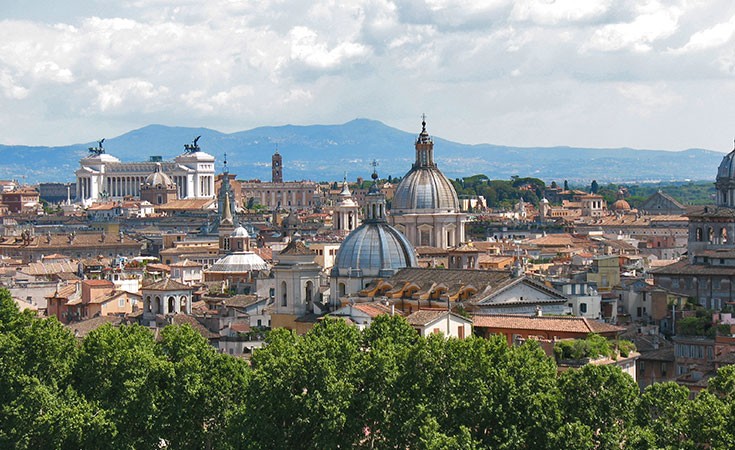
The tourist sights in Rome are so numerous that in all honesty not many visitors will ever manage to see them all. The city is dotted with umpteen ancient sights that stand in silent testimony of the glorious period of the Roman Empire, whereas those of a religious nature do not fall behind. For centuries, Rome and the Vatican have been the centre of the Roman Catholic religion, which means that at almost every square in the city you will find a church worth visiting.
Saint Peter’s Basilica
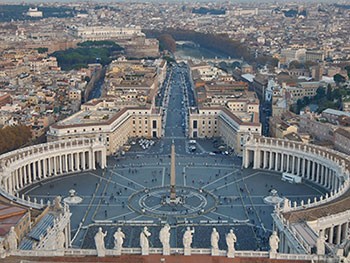
Probably the most visited sight in the city that draws an incredible number of visitors each day. Just the sheer size of this building will leave most visitors at a loss for words. If we add that in front of the basilica there is the gigantic Saint Peter’s Square intricately decorated with grandiose statues and stately fountains, it is no wonder that this sight tends to draw in visitors of all religions and nationalities. Michelangelo worked on this basilica who did not live long enough to see the results of his work. Inside the basilica, there is the 30-meter high papal altar that does not look that high in comparison to the rest of the building. You can also decide to climb to the dome of the Saint Peter’s Basilica, from where you will be able to enjoy wondrous vistas on Rome. Keep in mind it is not that easy to climb all those stairs though.
Colosseum in Rome
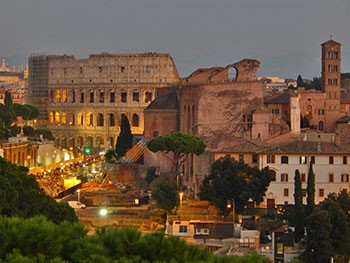
There is not a single tourist that comes to the city without wanting to visit the incredible Colosseum of Rome. The Colosseum in Rome is an amphitheatre that was used to entertain the Romans. This enormous building was 50 meters high and 188 meters long, it had 80 entrances, the admission was free of charge and it could hold between 50 and 80 thousand people. Here, the Romans were able to watch the gladiator fights, hunt various wild animals from all corners of the world, replicas of famous battles and even the naval battles. The spectacles could last for days, while for the inauguration of the Imperator Titus the spectacles lasted for unbelievable 100 days.
Trevi Fountain
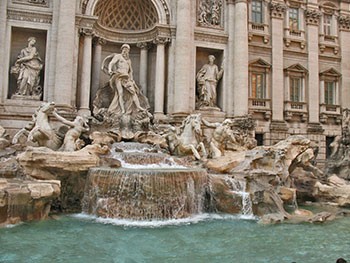
Tervi Fountain is the largest fountain in Rome and probably the best known such structure in the world. This fountain marks the end of the Aqua Vergine aqueduct, built by the famous Markus Agrippa more than 2000 years ago. However, the fountain itself is a much younger structure built in the 18th century. The mouth poppingly 32 meter- high structure that holds 300,000 litres of water and with the 6-meter high central statue of the Oceanus- God of all water is in this day and age best known among tourists for a chance for them to toss a coin and make a wish.
Pantheon in Rome

Even though the name Pantheon comes from the Greek compound meaning Temple of all Gods, it is not known whether this was the original name of this breathtaking building. It is known that it was constructed by a famous Roman general and close friend of the Imperator August- Marcus Agrippa in 31 BC. Upon its completion the building suffered considerable damage in a number of fires and was rebuilt several times. In the 7th century, it was given to the church, when its conversion to a Cristian religious building commenced. The Pantheon became the Church Santa Maria dei Martiri. It was stripped of all interior decoration, but this transformation was the only reason it has survived to date. Similar buildings were destroyed in order to recycle the construction material, therefore all the ancient structures that have survived were actually incorporated into religious buildings partly or in full.
Castel Sant’Angelo in Rome
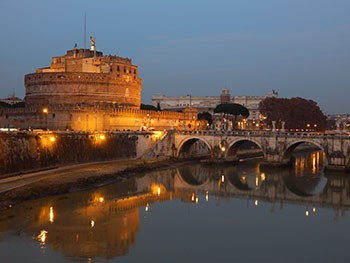
This castle is yet another building that survived from the ancient Roman period and which was converted to serve other purposes. At first, it was built as the mausoleum of Imperator Hadrian and his family. Imperator Hadrian was responsible for the construction of the 117km long Hadrian’s Wall in Great Britain that marked the northern border of the Empire. One century upon its completion, the mausoleum was incorporated into the forts and defense walls of Rome due to its position and height. In 509 during a plague outbreak, according to legend, Pope Gregory I had a vision in which he was told to lead a religious procession towards this mausoleum. On reaching the mausoleum, the Pope had another vision of Archangel Michael on top of the building sheathing his sword, which is why there is a golden statue of Archangel Michael on top of the building and why the castle got its new name- Castle Saint Angel.
Rome’s Zoo Bioparco
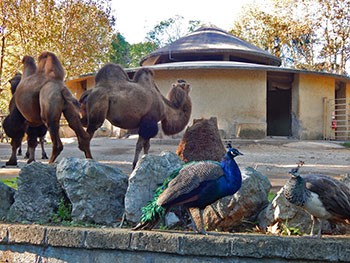
Tourists come to Rome so that they can thoroughly enjoy ancient Roman sights, however Rome also has a very spacious and stunning zoo called Bioparco. Here, you will be able to see some 200 animal species collated from five continents of the World. The most interesting feature of this zoo may well be the feeding times. When it is the time to feed the animals, you will hear the announcement over the zoo’s tannoy (loudspeakers), so you can head towards the enclosure of that particular animal. During the feeding, you will be able to take part and learn more about that particular animal from the zookeepers.
Rome’s seaside Lido di Roma
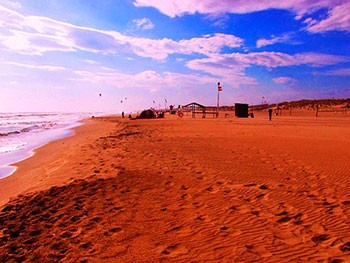
Most visitors come to Rome during summer with the aim of visiting main tourist attractions of the city. However, not many visitors are aware of the fact that Rome is in close proximity to the seaside. Just by buying a simple underground ticket, same price as for any other destination in the city, you will be able to take a swim and make a break from the sweltering hot summer weather and the visits to all those ancient sights.
Roman Forum
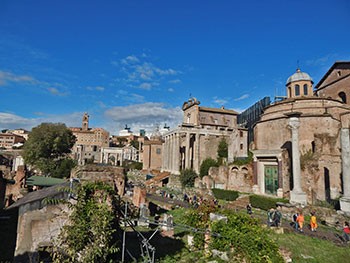
To modern tourists the Roman Forum may look like a heap of rubble, for not many monuments of this famed forum have survived to this very day. However, do not be fooled by the looks of the forum, since it represented the center of the known world and it is a structure that predates the era of all Roman Emperors. Therefore, it was constructed during the period when Rome was a republic and it represented the main city square, a market place, some would go as far as to claim that it was the most important gathering place of all times. According to popular belief, Romolo (the founder of Rome) was even assassinated here by the senators. Apart from umpteen other monuments, the House of Vestal Virgins was also here, house of the priestesses who tended to the sacred fire of Rome.
Spanish Steps and the Spanish Square
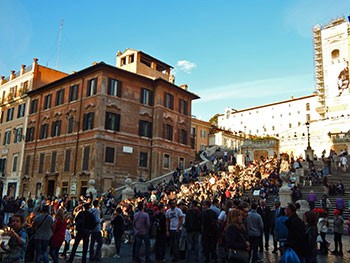
On the Spanish Square there are three monuments worth a mention: Column of the Immaculate Conception dedicated to the dogma of the Immaculate Conception, Fountain Barcaccia and the famous Spanish Steps. Of course, out of these three the stunningly beautiful Spanish Steps are by far the most well-known. Even though the original purpose of these magnificent steps was to connect Spanish Embassy to the Church Trinita dei Monti, today these steps are a famous tourist sight of Rome that offers a unique chance for a few snaps and a relaxing chat with your friends. Due to the popularity of the steps, practically each evening you may enjoy numerous exhibitions of local street artists that contribute to the whole atmosphere.
Villa Borghese Park

Villa Borghese is not a villa; it is actually an ample park. This park with a lavishly decorated villa belonged to the Borghese family and that is how it got its name. In this park, visitors may enjoy a very pleasant stroll, a boat ride on an artificial lake, but also a visit to one of the numerous museums and art galleries which are located here. In Villa Borghese the buildings located here are as follows: Art Gallery- an exceptionally beautiful art gallery, National Gallery of Modern Art- an incredibly large art gallery dedicated to contemporary art, Museum Carlo Bilotti and Museum Pietro Canonica- to which the admission is free of charge and finally the Zoo of Rome called Bioparco , all of which will most certainly strike you dumb with admiration
Capitol Hill in Rome
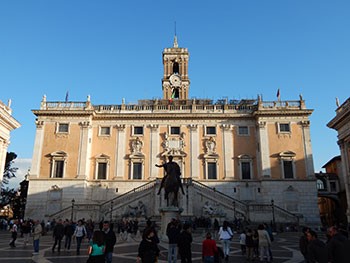
Have you heard of the famous Seven Hills of Rome? Capitol or Capitoline Hill is the most famous of them all. Here in the 6th century BC the famous temple of Jupiter was constructed, the temple in which Brutus and his accomplices sought refuge after having assassinated Julius Caesar. The famous Michelangelo was responsible for the modern day appearances of this square. According to his design, buildings on the hill were to block the view from the hill towards the Roman Forum and redirect it towards the St. Peter’s Cathedral, a Christian symbol of the city. Apart from numerous historic facts, the importance of this hill lies in the fact that right here Capitoline Museums are located, a group of different museums that are one of the best choices for those with a keen interest in history.
Piazza del Popolo in Rome
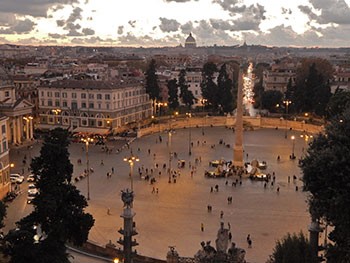
Piazza del Popolo or People’s Square is an incredibly ample city square that is known as one of the main tourist sights of Rome. The sheer size of the square is so awe inspiring that a 36 meters high Egyptian obelisk built by the pharaoh Seti I does not look that high. There is a very famous viewpoint Terazza del Pincio, which is within easy reach from this city square. While standing in the square you are bound to notice a breathtaking belvedere on one side of the square, from where you will be able to enjoy a riveting view on the Piazza del Popolo and the St. Peter’s Basilica.
Piazza Venezia in Rome
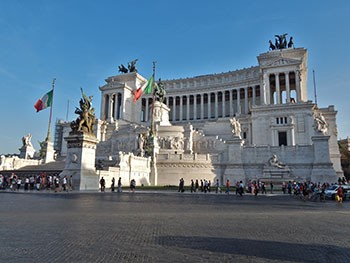
Piazza Venezia is a tourist sight in Rome that no one seems to want to miss. The main attraction of this square is the white marble monument called Vittoriano, dedicated to the first king of Italy Vittorio Emanuele II, who managed to unify Italy. Inside the monument, there is the Museum of Italian Resurgence, where visitors may learn more about the turbulent period of the Italian unification, whilst on the top of the monument there are terraces from which you may enjoy one of the most wondrous views on Rome. On the other hand, even the square has its tales to tell. In one of the buildings on this square, Napoleon Bonaparte’s mother lived after she was granted the asylum by the Pope. Another building on this square gained notoriety for its balcony from where Benito Mussolini used to address the citizens in his famous speeches.
Piazza Navona in Rome
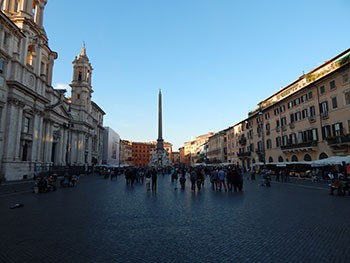
Navona city square is yet another of the famous sights of Rome. Its atypical oval shape is due to the fact that it was built on the foundations of the ancient stadium of Imperator Domitian. Today, this square is famous for its three fountains which still manage to hold the visitors spellbound. It is well worth mentioning that the entrance to the Museum of Rome and the Church Saint Agnese in Agone is from this square.
Campo de'Fiori city square
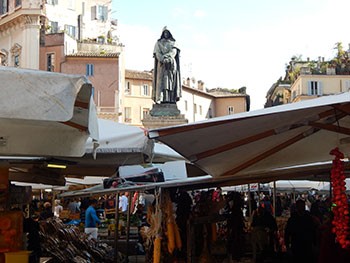
Campo de'Fiori or the Field of Flowers is a famous city square in Rome but funnily enough not due to its architecture. It is the only city square in Rome where there is not a single church whatsoever. The reason for this is that religious executions were held in this very place. On this square even the famous monk and philosopher Giordano Bruno was burnt alive at the stake in the year 1600. Nowadays, in this very square there is a market that offers different produce mostly to tourists and a monument dedicated to Giordano Bruno, facing towards the Vatican, while Bruno is shown with a seriously scolding and deprecating look directed towards the centre of the papal state.
Bocca della Verita
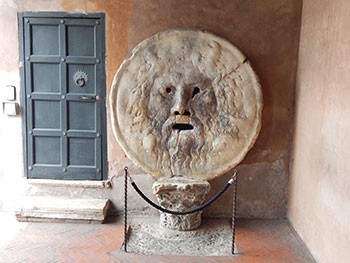
Bocca della Verita or The Mouth of Truth is a marble disc that was most probably the cover of one of the Roman fountains. In the 17th century, this marble disk was built into the walls of the Church of Santa Maria in Cosmedin. The legend has it that if a person puts a hand into the mouth of the figure on the marble disk and tells a lie, the figure will apparently bite their hand off. Only after Bocca della Verita appeared in one scene of a Hollywood movie: Roman Holiday in 1953, did this structure become popular among tourists and finally seems to have put the church in the tourist map of the city.
Translation support - angloland
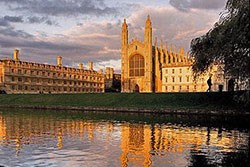
Want to study for Cambridge English exams? Email us at [email protected]